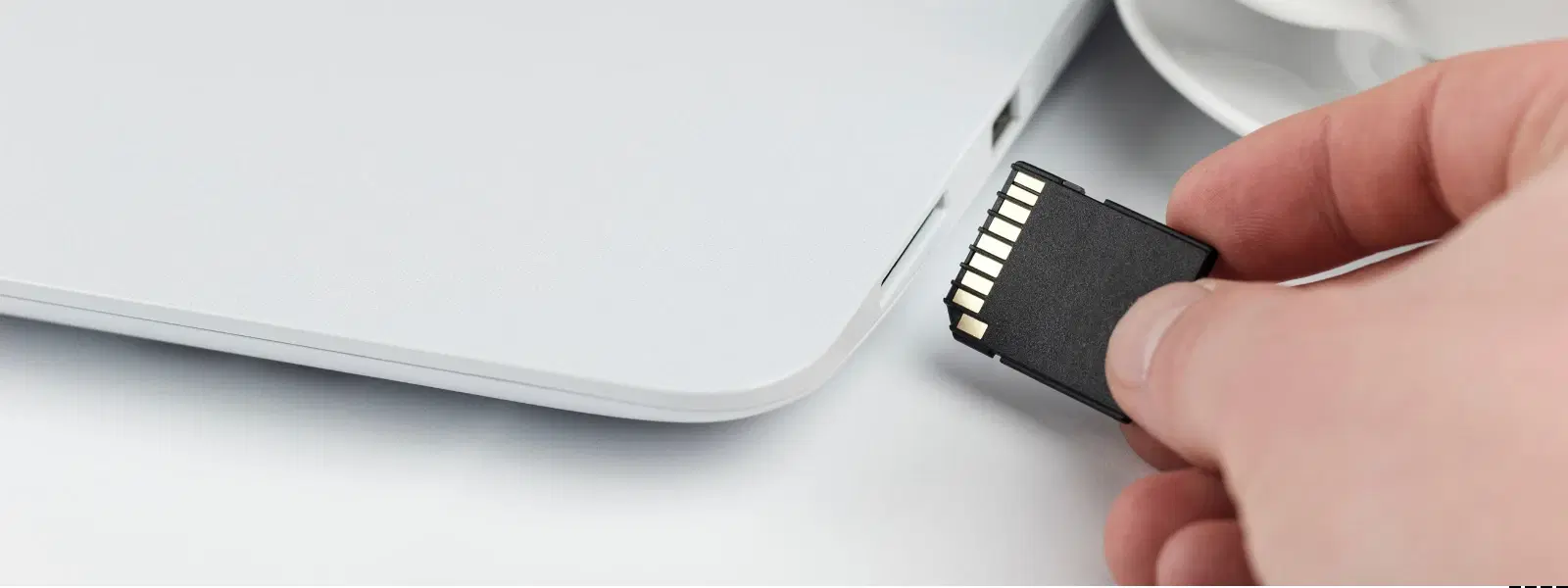
Consumer Electronics
•03 min read
Ever struggled with formatting an SD card on your Mac? You're not alone! Many users find this process confusing, but with the right guidance, it can be straightforward and hassle-free. In this guide, you'll learn how to format SD cards on your Mac, erase or reformat them when needed, and troubleshoot common issues. By the end, you'll be well-equipped with a clear, step-by-step approach to setting up your SD card for optimal performance.
Formatting an SD card is essential for clearing previous data, optimising performance, and ensuring compatibility with different devices. Whether you are using your card in cameras, GoPros, or other gadgets, formatting helps in maintaining smooth functionality and longevity. With tools on platforms like Tata Neu, you can also enjoy benefits such as NeuCoins rewards when you shop smartly across tech categories.
Common file systems include exFAT, FAT32, and APFS. For instance, exFAT is ideal for SD cards used across modern devices, while FAT32 tends to be more suitable for older cameras and gaming consoles. Choosing the right format is crucial. When you format SD card Mac, think about what devices you plan to use it with. This simple step can prevent future issues such as incompatibility or data corruption.
Disk Utility is the most reliable method for formatting your SD card on Mac. Follow these simple steps:
1. Connect your SD card to your Mac using the appropriate card reader.
2. Open Disk Utility via Spotlight or by navigating to the Applications folder.
3. Select your SD card from the list of available drives.
4. Click on the Erase option.
5. Choose the file system format (for example, exFAT or FAT32) that best suits your needs.
6. Name your SD card and confirm the erase process.
This method is highly recommended for most users since it provides a straightforward and effective way to erase SD card Mac while setting the stage for your mac SD card setup.
For advanced users or those who prefer command-line operations, Terminal offers an alternative method. This approach requires precision as an error could result in data loss. If you decide to initialize SD card Mac using Terminal commands, proceed cautiously and ensure you have a backup of any important data.
If you encounter an issue where your card is not formatting on Mac, there could be several reasons behind it. Write protection, hardware faults, or file system corruption are common culprits. To overcome these issues:
- Disable any write protection on the card.
- Inspect the card for physical damage.
- Consider using a different formatting method if Disk Utility proves ineffective.
Sometimes, Disk Utility may not complete the process as expected. In these cases, try using Terminal commands or specialised SD Card Formatter software. These alternatives can help reformat SD card Mac properly or even clean SD card Mac effectively if the standard method fails.
Regular formatting of your SD cards can prevent data corruption and enhance performance over time. It is advisable to backup important files before you perform any reformatting. This step not only helps in ensuring data safety but also prepares your card for optimal function, echoing the ease of mind that comes with shopping smartly on platforms like Tata Neu.
Maintaining your SD card both physically and digitally is important. Use Disk Utility to securely erase data and clean out remnants. Additionally, consider the specific needs of your device—be it a camera, gaming console, or any other gadget—when performing your mac SD card formatting guide.
Expert Tip: Choosing the Right File Format for Your SD Card
Did you know that exFAT is the ideal file format for SD cards used across multiple devices, while FAT32 is better suited for older cameras and gaming consoles? Always check device compatibility before formatting to avoid issues.
Format the SD card using Disk Utility and select the exFAT file system for compatibility with most cameras.
You can use Terminal commands or third-party software like SD Card Formatter to format the SD card.
This could be due to write protection, physical damage, or a corrupted card. Disable write protection, check for any damage, or try alternative formatting methods.
Yes, select FAT32 as the file system in Disk Utility when erasing the SD card.
Erasing removes all data, while formatting creates a new file system to ensure full compatibility with your devices.
In summary, formatting your SD card on Mac involves choosing the right file system, using reliable tools such as Disk Utility or Terminal, and knowing simple troubleshooting tips. Adopting these practices ensures your digital storage remains efficient and clutter-free. With insights like these and the rewards of NeuCoins when transacting with Tata Neu, you can enjoy a seamless tech experience that keeps you connected and productive without compromise.